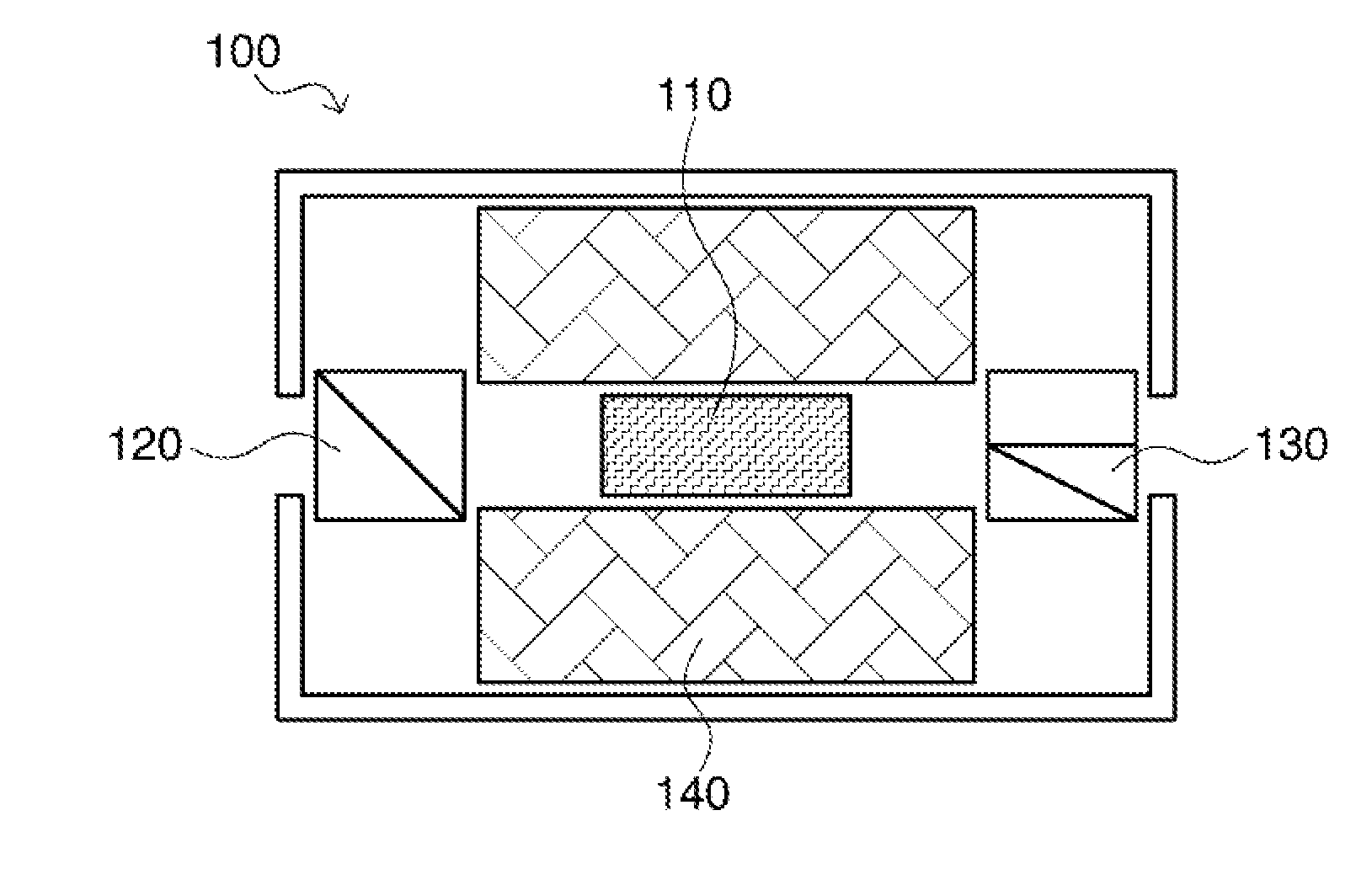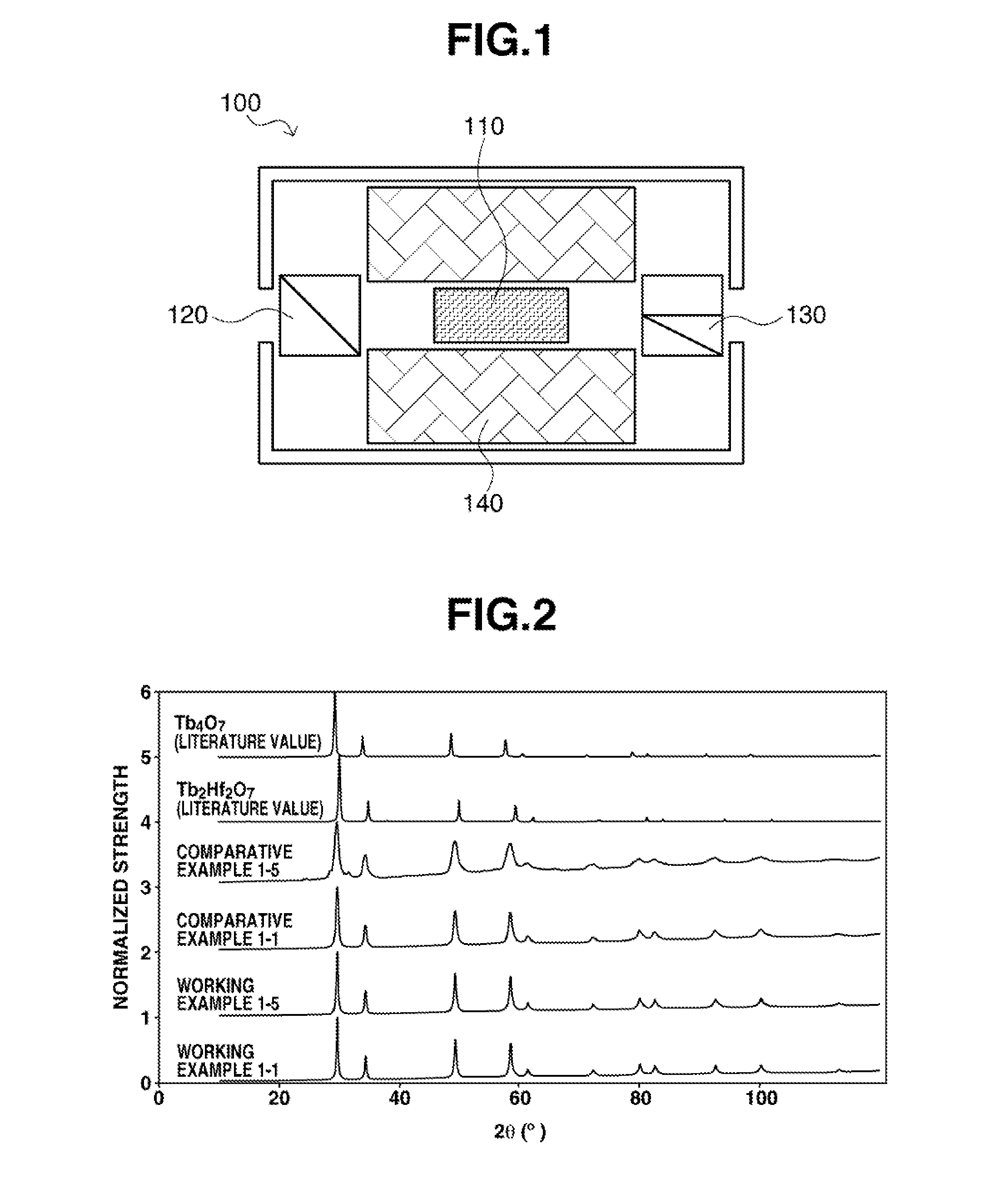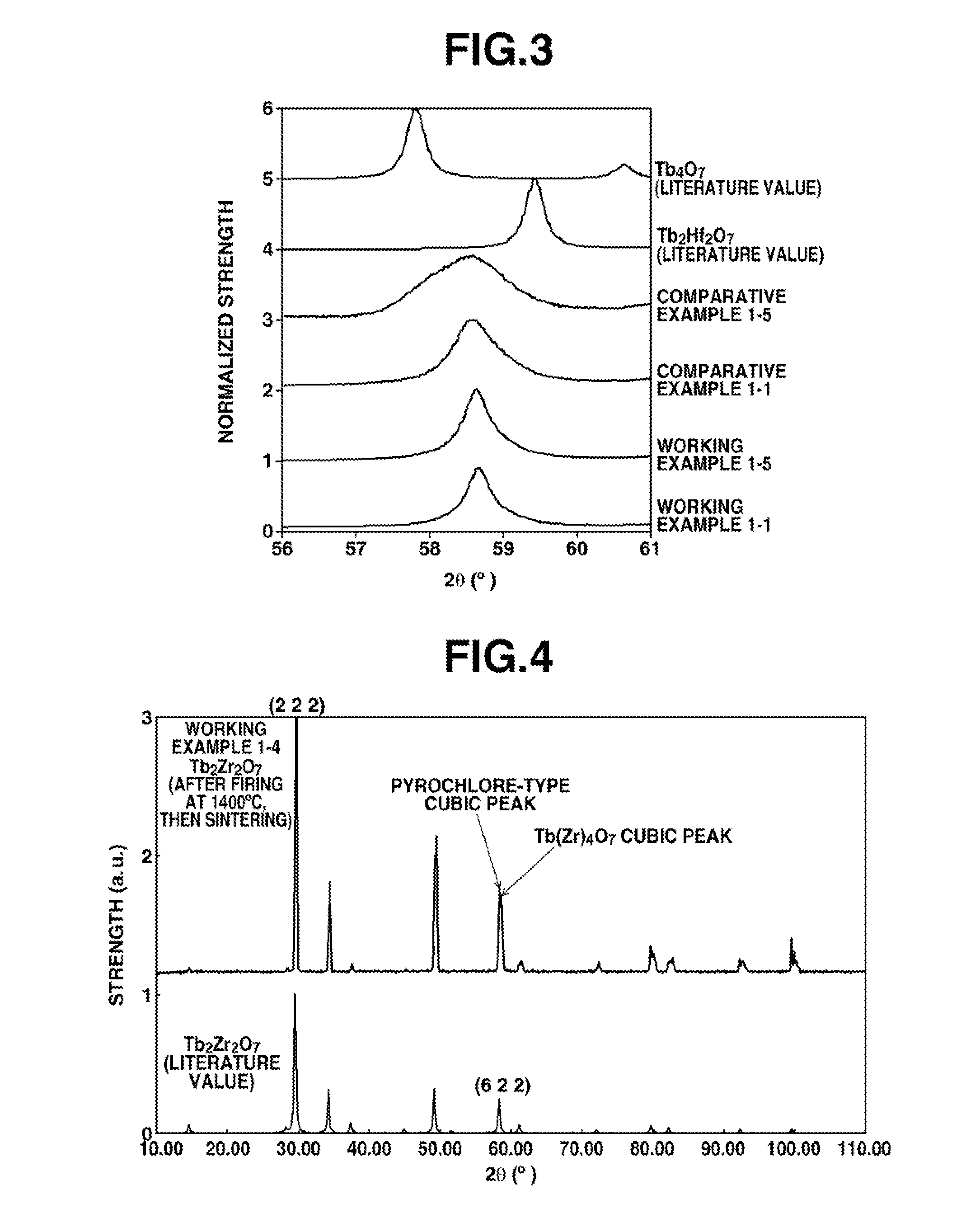Magnetooptical material, manufacturing method therefor, and magnetooptical device
a technology of magnetosphere and material, applied in the direction of inorganic chemistry, crystal growth process, gel state, etc., can solve the problems of deterioration of beam quality, disturbance of oscillation state, and particularly severe disruption of oscillation sta
- Summary
- Abstract
- Description
- Claims
- Application Information
AI Technical Summary
Benefits of technology
Problems solved by technology
Method used
Image
Examples
working example 1
Comparative Example 1
[0072]Examples are described here in which hafnium, tin, titanium or zirconium was selected as a single element to fill the B site positions (R in above formula (1)).
[0073]Terbium oxide powder produced by Shin-Etsu Chemical Co., Ltd., hafnium oxide powder produced by American Elements, stannic oxide powder and titanium oxide powder produced by Kojundo Chemical Laboratory Co., Ltd., and zirconia powder produced by Nissan Chemical Industries, Ltd. were procured. The purities were all at least 99.9 wt %.
[0074]Four pyrochlore-type oxide starting materials, these being Tb2Hf2O7, Tb2Sn2O7, Tb2Ti2O7 and Tb2Zr2O7, were produced using the above raw materials. That is, four mixed powders were prepared: a mixed powder obtained by weighing out terbium oxide and hafnium oxide so that the terbium and hafnium are in an equimolar ratio, a mixed powder obtained by weighing out terbium oxide and stannic oxide so that the terbium and tin are in an equimolar ratio, a mixed powder o...
working example 2
Comparative Example 2
[0110]Examples are described here in which at least one element selected from the group consisting of silicon, germanium, titanium, tantalum and tin was filled at the B site positions in above formula (1) to give compositions other than the compositions of Working Example 1.
[0111]Terbium oxide powder produced by Shin-Etsu Chemical Co., Ltd., silica powder, germanium dioxide powder, titanium oxide powder and stannic oxide powder produced by Kojundo Chemical Laboratory Co., Ltd., and tantalum pentoxide produced by Showa Chemical Industry Co., Ltd. were procured. The purities were all at least 99.9 wt %.
[0112]The following complex oxide starting materials were produced using these raw materials: a mixed powder obtained by weighing out terbium oxide, silica and zirconia in such a way that the molar ratio of terbium to silicon to zirconium is 2:1:1, a mixed powder obtained by weighing out terbium oxide, germanium dioxide and zirconia in such a way that the molar rati...
working example 3
[0121]Other examples are described in which hafnium or zirconium was selected for the B-site positions in formula (1).
[0122]Terbium oxide powder produced by Shin-Etsu Chemical Co., Ltd., hafnium oxide powder produced by American Elements, and zirconia powder produced by Nissan Chemical Industries, Ltd. were procured. The purities were all at least 99.9 wt %.
[0123]The two pyrochlore-type oxide starting materials Tb2Hf2O7 and Tb2Zr2O7 were produced using these raw materials. That is, the two following mixed powders were prepared: a mixed powder obtained by weighing out terbium oxide and hafnium oxide in such a way that the terbium and hafnium are in an equimolar ratio, and a mixed powder obtained by weighing out terbium oxide and zirconium oxide in such a way that the terbium and zirconium are in an equimolar ratio. Next, the mixed powders were dispersed and mixed in ethanol within a zirconia ball mill while being careful to prevent contamination between the different powders. The tre...
PUM
| Property | Measurement | Unit |
|---|---|---|
| diameter | aaaaa | aaaaa |
| diameter | aaaaa | aaaaa |
| diameter | aaaaa | aaaaa |
Abstract
Description
Claims
Application Information
 Login to View More
Login to View More - R&D
- Intellectual Property
- Life Sciences
- Materials
- Tech Scout
- Unparalleled Data Quality
- Higher Quality Content
- 60% Fewer Hallucinations
Browse by: Latest US Patents, China's latest patents, Technical Efficacy Thesaurus, Application Domain, Technology Topic, Popular Technical Reports.
© 2025 PatSnap. All rights reserved.Legal|Privacy policy|Modern Slavery Act Transparency Statement|Sitemap|About US| Contact US: help@patsnap.com



